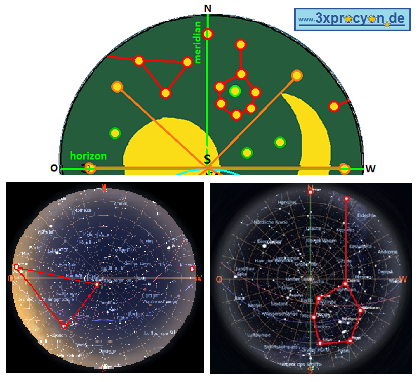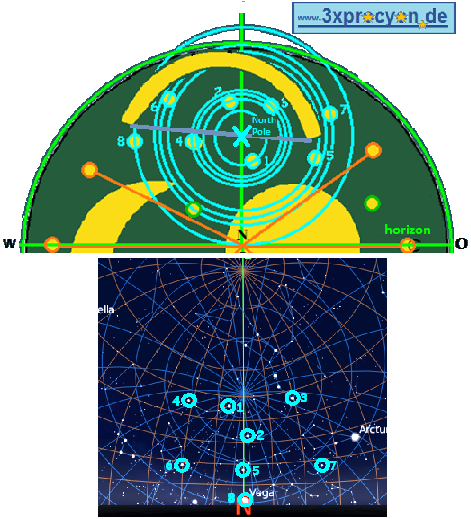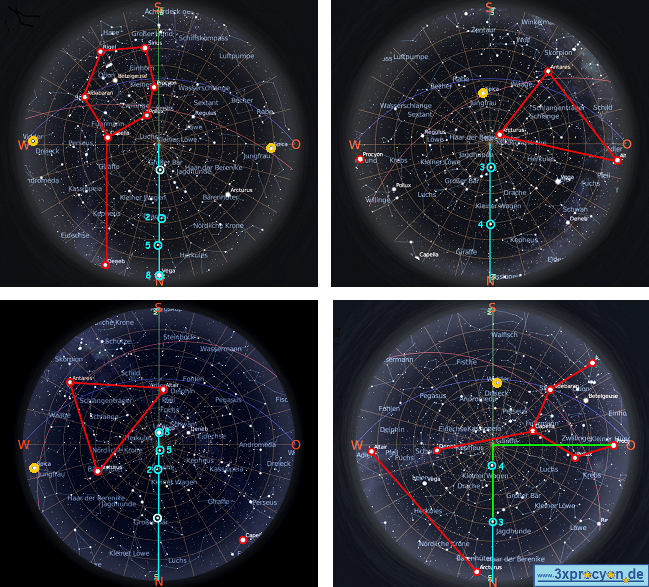Looking in a northerly direction we can see that the circumpolar stars circle a formerly starless North Pole.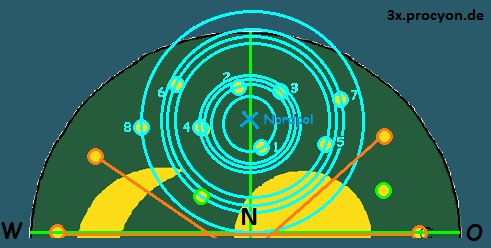
On the Nebra Sky Disc its hight above the horizon on the meridian (= imaginary great circle through the North Pole and the South Pole) is defined by the centre of the circuit of the outer circumpolar star, number 8.
On the computer map the centre of the blue lines corresponds to the northern celestial pole.
The distances between the parallel circles of all the stars of the Sky Disc, marked in light-blue, do not agree with the “distorted” circuits of the stars in the north view of the computer map, but they proportionately fit the altitude angles of the following upper stars: 1 Kocab / Little Bear, 2 η-Draco, 3 Alkaid / Big Bear, 4 Polaris / Little Bear, 5 Etamin / Draco, 6 Alderamin / Kepheus, 7 Alphekka / Northern Crown, 8 Vega / Lyra.

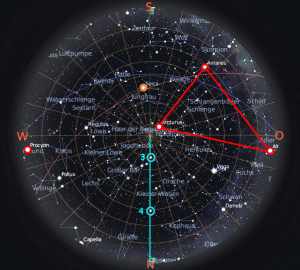 Present doubts about the validity of the classification are allayed when we have a look at the entire firmament, as in the Early Bronze Age in Central Germany
Present doubts about the validity of the classification are allayed when we have a look at the entire firmament, as in the Early Bronze Age in Central Germany 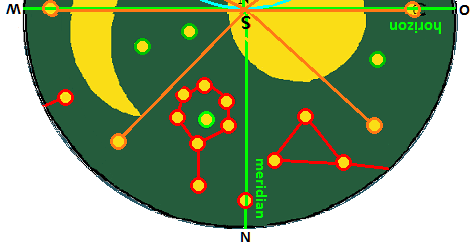 three of the recognized circumpolar stars were positioned almost vertically on top of one another in the meridian (2 η-Draco, 5 Etamin, 8 Vega), while the constellation from the Winter Hexagon with Deneb and Vega was visible. They form an astral hand.
three of the recognized circumpolar stars were positioned almost vertically on top of one another in the meridian (2 η-Draco, 5 Etamin, 8 Vega), while the constellation from the Winter Hexagon with Deneb and Vega was visible. They form an astral hand.
Two further circumpolar stars (3 Alkaid, 4 Polaris) were located in the meridian exactly six hours later when a triangular constellation occupied the eastern quarter of the sky and Procyon, close to the west point, was just about to set.
This part of a perfect star clock, whose hands circle the North Pole in quarter turns at a distance of exactly six hours, has only been seen for very few centuries in approximately 26.000 years!
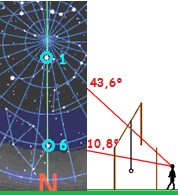 Another astral hand, 1 Kocab and 6 Alderamin, might have pointed to True North. “The north was, where the extension of their conection line met the horizon vertically (Kate Spence 2000).” [1]
Another astral hand, 1 Kocab and 6 Alderamin, might have pointed to True North. “The north was, where the extension of their conection line met the horizon vertically (Kate Spence 2000).” [1]
Presumably the circumpolar star 7 Alphekka was especially important for helping travelers to find their way as it was the brightest star which, after Vega, reached in Central Germany a low position above the True North, as already ascertained.
______________________________
[1] www.zeit.de/2000/47/cheops%27_Kompass/seite-3

